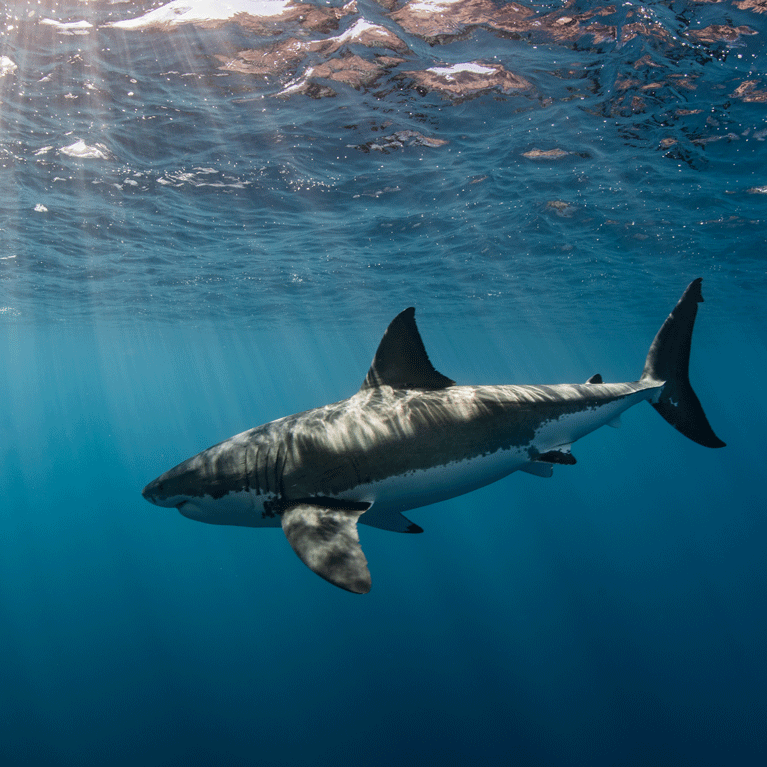Shark Conservation Fund
The Shark Conservation Fund (SCF) distributes grants, aiming to end the global overexploitation of sharks and rays. Using sharks and rays as flagship species, the fund’s mission is to protect the health of the oceans by maintaining their function. Four key objectives underpin a strategy to achieve systematic change in shark and ray management:
- Protecting 100 vital shark and ray areas by 2030;
- regulating international trade in sharks and rays;
- protecting the most endangered species;
- combating unsustainable fishing practices.
Through its philanthropic collaborations, the SCF wants to prevent species extinctions, reverse population declines and restore population numbers by means of policy, outreach, advocacy, science and monitoring.
I am the executive director of the Shark Conservation Fund, a collaboration of philanthropists dedicated to solving the global shark and ray crisis. The fund aims to halt the overexploitation of the world’s sharks and rays, prevent extinctions and restore endangered species through the strategic and catalytic awarding of grants. Before joining the Shark Conservation Fund I spent 20 years working on fisheries management at state, federal and international levels with the US government and the non-profit sector. Most recently I was the director of US Oceans for The Pew Charitable Trusts, where I led Pew’s efforts to establish...
Shark Conservation Fund Project
To maintain the vibrancy of the world’s oceans by halting the overexploitation of sharks and rays and to prevent extinctions by awarding strategic, collaborative and catalytic grants.
Sharks and rays make up the second most threatened group of vertebrates in the world. Given the integral role they play in ocean ecosystems, the health of shark and ray populations is closely linked to ocean health. The Shark Conservation Fund seeks to preserve the vitality of the world’s oceans by supporting efforts to halt the overexploitation of sharks and rays and to prevent extinctions.
As key ocean predators, sharks and rays are essential to the health of marine ecosystems and any depletion in their populations threatens that health and jeopardises the livelihoods of people around the world. Approximately 100 million sharks are killed annually and 37% of all shark and ray species are facing extinction. Unsustainable fishing (fuelled by increasing demand for shark products, especially fins and meat) and poorly controlled trade have led to a 90% decline in some shark and ray populations worldwide. Conservation and management in most parts of the world cannot keep pace with these threats.
The Shark Conservation Fund, a collaboration of philanthropists established in 2016, is dedicated to restoring ocean health by means of sweeping shark and ray conservation endeavours. Its goal is to help maintain the vitality of the world’s oceans by bringing to an end the overexploitation of sharks and rays, preventing extinctions, reversing declines and restoring populations; its methods are policy development, outreach and advocacy, science, communication, capacity building and monitoring. To achieve comprehensive changes in shark and ray management on a transformative scale, the fund leverages its strategy to attain four major goals.
- To protect 100 of the most important shark and ray areas by 2030. One of the most effective ways to protect sharks and many other species is by shielding them and their habitats in marine protected areas. In these areas, fishing and other commercial activities are banned or strictly regulated.
- To regulate the global trade in at least 50% of the commercially valuable shark and ray species by getting them listed on Convention on International Trade in Endangered Species (CITES) appendices. Listing obliges participating governments to ensure that any trade in listed shark and ray species is legal and ‘will not be detrimental to the survival of that species’.
- To protect the most endangered species. By establishing legal protection in target countries, the fund seeks to reverse the downward trend in shark populations and global shark and ray health.
- To combat unsustainable fishing by using CITES as the global driver for countries to manage sharks and rays sustainably. Where fishing is a major source of food and jobs, programmes are launched to educate communities about shark and ray conservation and to help them develop management plans and build capacity to patrol their waters and enforce regulations. Setting up alternative job and food programmes is another means to reduce the demand for sharks and rays.


